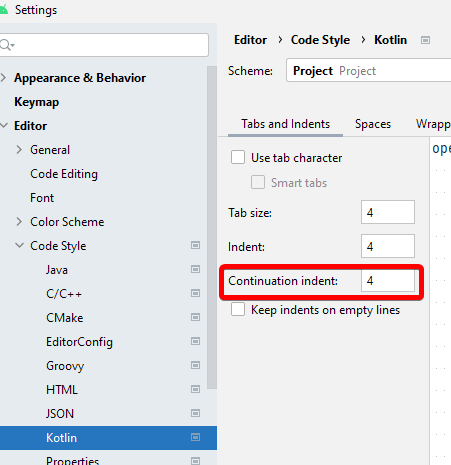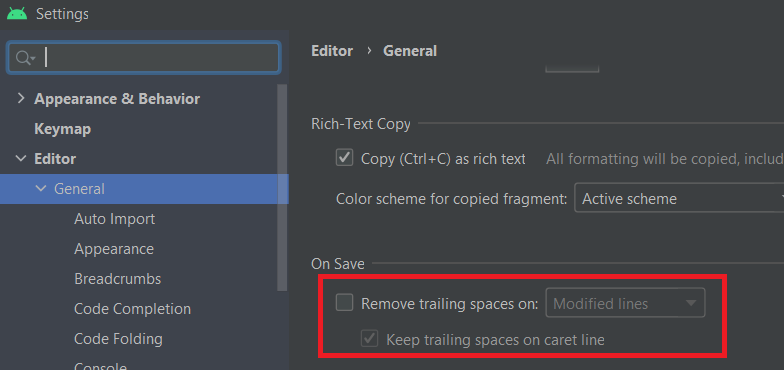6.8 KiB
Building Locally
This is a guide to editing, building, running and deploying Unciv from code
So first things first - the initial "No assumptions" setup to have Unciv run from-code on your computer!
With Android Studio
- Install Android Studio - it's free and awesome! Be aware that it's a long download!
- Install Git, it's the way for us to work together on this project. UI is optional, Android Studio has good Git tools built in :)
- Getting the code
- Create a Github account, if you don't already have one
- Fork the repo (click the "Fork" button on the top-right corner of https://github.com/yairm210/Unciv) - this will create a "copy" of the code on your account, at https://github.com/YourUsername/Unciv
- Clone your fork with git - the location will be https://github.com/YourUsername/Unciv.git, visible from the green "Clone or download" button at https://github.com/YourUsername/Unciv
- Load the project in Android Studio, Gradle will attempt the initial sync. If this is your first time with Android Studio, this may require you to accept the Android Build-tools licenses, which works differently on every device, so search for your OS-specific solution.
- A new install may not be able to do the initial sync - this comes in the form of
Unable to find method ''void org.apache.commons.compress.archivers.zip.ZipFile.<init>(java.nio.channels.SeekableByteChannel)''errors when you try to sync. If you have this problem go into File > Settings > Appearance & Behavior > System Settings > Android SDK- Click "SDK Platforms"
- Click "Android API 32 (Sv2)"
- Click "SDK Tools"
- Select "Show Package Details" in the bottom right
- Choose version 32.0.0 under "Android SDK Build-Tools"
- Click "Apply"
- A new install may not be able to do the initial sync - this comes in the form of
- In Android Studio, Run > Edit configurations (be sure the Gradle sync is finished successfully first).
- Click "+" to add a new configuration
- Choose "Application"
- Give the configuration a name, we recommend "Desktop"
- Set the module classpath (the box to the right of the Java selection) to
Unciv.desktop.main(Unciv.desktopfor Bumblebee or below), main class tocom.unciv.app.desktop.DesktopLauncherand<repo_folder>\android\assets\as the Working directory, OK to close the window- If you get a
../../docs/uniques.md (No such file or directory)error that means you forgot to set the working directory!
- If you get a
- Select the Desktop configuration (or however you chose to name it) and click the green arrow button to run! Or you can use the next button -the green critter with six legs and two feelers - to start debugging.
- A few Android Studio settings that are recommended:
- Going to Settings > Version Control > Commit and turning off 'Before commit - perform code analysis'
- Settings > Editor > Code Style > Kotlin > Tabs and Indents > Continuation Indent: 4

- Settings > Editor > General > On Save > Uncheck Remove trailing spaces on: [...] to prevent it from removing necessary trailing whitespace in template.properties for translation files

Unciv uses Gradle to specify dependencies and how to run. In the background, the Gradle gnomes will be off fetching the packages (a one-time effort) and, once that's done, will build the project!
Unciv uses Gradle 7.2 and the Android Gradle Plugin 7.1.3. Can check in File > Project Structure > Project
Note advanced build commands as described in the next paragraph, specifically the gradlew desktop:dist one to build a jar, run just fine in Android Studio's terminal (Alt+F12), with most dependencies already taken care of.
Without Android Studio
If you also have JDK 11 installed, you can compile Unciv on your own by cloning (or downloading and unzipping) the project, opening a terminal in the Unciv folder and run the following commands:
Windows
- Running:
gradlew desktop:run - Building:
gradlew desktop:dist
Linux/Mac OS
- Running:
./gradlew desktop:run - Building:
./gradlew desktop:dist
If the terminal returns Permission denied or Command not found on Mac/Linux, run chmod +x ./gradlew first. This is a one-time procedure.
If you get an error that Android SDK folder wasn't found, firstly install it by doing in terminal:
sudo apt update && sudo apt install android-sdk (Debian, Ubuntu, Mint etc.)
After that you should put its folder to the file local.properties by adding this line:
sdk.dir = /path/to/android/sdk which can be /usr/lib/android-sdk or something other.
If during the first launch it throws an error that the JDK version is wrong try to install JDK from here.
Gradle may take up to several minutes to download files. Be patient. After building, the output .JAR file should be in /desktop/build/libs/Unciv.jar
For actual development, you'll probably need to download Android Studio and build it yourself - see Contributing :)
UncivServer
The simple multiplayer host included in the sources can be set up to debug or run analogously to the main game:
- In Android Studio, Run > Edit configurations.
- Click "+" to add a new configuration
- Choose "Application" and name the config, e.g. "UncivServer"
- Set the module to
Unciv.server.main(Unciv.serverfor Studio versions Bumblebee or below), main class tocom.unciv.app.server.DesktopLauncherand<repo_folder>/android/assets/as the Working directory, OK to close the window.
- Select the UncivServer configuration and click the green arrow button to run! Or start a debug session as above.
To build a jar file, refer to Without Android Studio and replace 'desktop' with 'server'. That is, run ./gradlew server:dist and when it's done look for /server/build/libs/UncivServer.jar
Unit Tests
You can (and in some cases should) run and even debug the unit tests locally.
- In Android Studio, Run > Edit configurations.
- Click "+" to add a new configuration
- Choose "Gradle" and name the config, e.g. "Unit Tests"
- Under "Gradle Project", choose "Unciv" from the dropdown (or type it), set "Tasks" to
:tests:testand "Arguments" to--tests "com.unciv.*", OK to close the window.
- Select the "Unit Tests" configuration and click the green arrow button to run! Or start a debug session as above.
Next steps
Congratulations! Unciv should now be running on your computer! Now we can start changing some code, and later we'll see how your changes make it into the main repository!
Now would be a good time to get to know the project in general at the Project Structure overview!